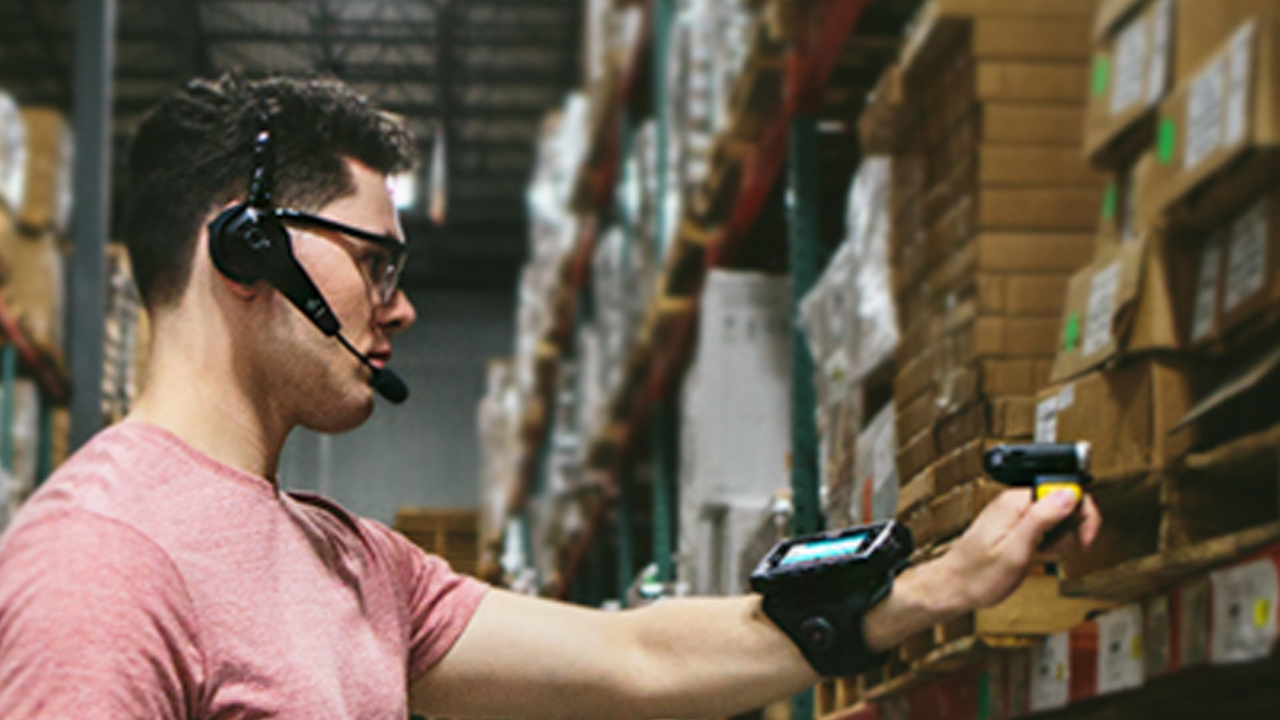
Study: Keeping Warehouse Workers Comfortable at Work is a Challenge
When was the last time you asked your workers if they were comfortable? Not how things are going. Not how they’re feeling. But, very pointedly, if they’re comfortable.
If you work in a healthcare environment, especially a hospital or long-term care facility, you may have asked a patient if they were comfortable five minutes ago. Honestly, it’s probably a question you ask patients 50-plus times a day. However, if you work in a more industrial environment such as a warehouse, it may not be a question that you’ve asked any of your colleagues in the last five years.
That’s because the words “comfort” and “comfortable” aren’t in most people’s workplace vernacular, even though they absolutely should be.
“Happy Employees Work Harder”
A study from the University of Warwick found “that human happiness has large and positive causal effects on productivity.” While this may not be a huge shock, I think it’s a crucial reminder that organizations have to be willing to invest more in their workers. Specifically, workers’ comfort – especially as more is demanded of them.
Comfort and happiness go hand in hand, and happy workers won’t be as inclined to look for a “better” job – good news for those wanting to improve labor retention rates. At the same time, if your organizations offer a more comfortable work environment, job seekers will be more likely to flock your way – which helps with recruitment.
Now, the definition of “comfort” is going to vary a bit depending on factors somewhat out of your control. If you scour through the studies that have been done related to worker comfort, most focus on the impact of room temperature or lighting; wellness benefits such as paid gym memberships or relaxation rooms in the office; flexible schedules or relaxed dress codes. And all of these are important considerations.
In fact, my colleague Mark Jolley recently implored warehouse operators specifically to assess the quality of their workplaces and consider adding small perks – such as a coffee bar or fitness benefits – that could quite literally perk up workers from a happiness perspective.
Based on Zebra’s latest Warehousing Vision Study, it seems as though his call to action resonated with the masses: 88 percent of warehouse leaders now state that worker comfort and ergonomics are their top labor initiatives over the next five years.
That’s refreshing to hear! As I have mentioned in a previous blog, labor recruitment and retention are very real challenges in warehousing right now. (Though I don’t need to tell you that, right?) At the same time, optimizing the productivity and effectiveness of the labor you do have has never been more critical. (Again, something you know all too well.)
That’s why something said by one of the lead researchers on the University of Warwick study really struck a chord with me:
“The driving force seems to be that happier workers use the time they have more effectively, increasing the pace at which they can work without sacrificing quality.”
When talking about “comfort” as a workplace motivator, I’m often reminded of the fact that happiness is subjective. So is a person’s characterization of comfort. Each worker is going to have his or her own expectations and tolerances when it comes to workplace culture, and each will place a different weight on physical versus emotional versus mental comfort. Since each individual is incentivized to work harder for different reasons, is it even possible to make every worker comfortable enough and, therefore, happy enough to noticeably boost productivity?
Honestly, I don’t know.
What I do know is that technology plays a direct and considerable role in helping “workers use the time they have more effectively, increasing the pace at which they can work without sacrificing quality.” Therefore, the right technology can help to reduce workers’ stress levels and give them a greater sense of accomplishment – both of which can elevate workplace comfort and happiness levels.
Ergonomics and Ease of Use Influence Whether Technology is Comfortable or Not (i.e. Enabling or Disruptive)
We talk often about how to complement and augment workers’ skills with technology to increase efficiency and productivity. Enabling them to access augmented reality applications on their handheld mobile computers, for example, will provide the “directed action” guidance needed to locate and navigate to inventory faster during picking or put away tasks. But asking a worker to move around a warehouse quickly and safely with their head down looking at a 4-6-inch smartphone screen – or even a larger 10-12-inch tablet display – isn’t fair.
These workers would be better served by a wearable heads-up display – something like a pair of smart glasses – that could project that same AR app into their line of sight, regardless of head position, with the more traditional smartphone or tablet-based AR experience reserved for workers who aren’t rushing up and down miles of aisles all day long. However, the heads-up display has to be lightweight and comfortable to wear all day long, otherwise workers will be inclined to take it off and look down at the mobile device in their hands for guidance.
Along those same lines, workers who most benefit from holding a mobile device in hand all day – such as someone using a scanner for inventory counts or a supervisor using a tablet for quality control checks at the loading dock – will be best served by lighter form factor designs and/or accessories that make such workflows more physically comfortable.
Warehouse work is very scan intensive and can be tiring on the fingers, wrists and hands. The motion of “tilt and verify” is something that can be addressed fairly easily in a couple of different ways:
1.) Through new device form factors that allow the screen to be facing the user when scanning—eliminating the need to tilt to verify the scan, which leads to unnecessary wrist strain.
2.) Via wearable ring scanners that can verify each scan using programmable LED lights that stay within workers’ line of sight during scanning activities.
3.) Opting for handheld scanners that are mountable on pick carts. This allows workers to scan by moving the barcode in front of the scan window, which keeps their hands free and eliminates any kind of wrist movement.
4.) Giving workers a mobile device that can simultaneously scan multiple barcodes and text with a single trigger pull can also be a real relief for the trigger finger – and real comfort maker. Just watch this video:
Even forklift drivers can be helped by a smaller, well-positioned rugged tablet mounted on the dashboard that can easily be removed when they need to “grab it and go” to check something out on the floor. A large, heavy, stationary in-vehicle computer mounted in the center console will likely just be in the way. Worse, if a fixed computer fails or needs routine servicing, that means an operator’s forklift – and possibly an operator – has to be taken out of service until the computer is ready to go again.
In other words, ergonomics play a big role in technology effectiveness and, therefore, worker effectiveness. Ergonomics affect comfort, which influences happiness, which also influences worker effectiveness and retention and so on. You can see the circle of influence here.
The Takeaway
As you think about how best to improve worker comfort and ergonomics, keep in mind that any technology you introduce into your work environment will either become enabling or disruptive from a productivity perspective. You must ensure that workers’ jobs will feel easier – or actually become easier – physically and/or mentally by deploying that particular mobile computer, scanner, tablet, wearable, printer, etc.
Yes, you read that right. I just said that your printer is just one of the many technology platforms that factor into workplace comfort. If you’ve ever spent what feels like hours changing a cartridge or loading a ribbon, you’ll know that something as simple as this action can make you feel uncomfortable and frustrated if it’s not a super easy, fast or clean process. No one wants to spend the rest of their day covered in ink or have to play catch up because they just lost even 10 minutes changing out a ribbon.
And while you may not think that investing in a better label printer will dramatically influence workers’ comfort levels (can that really compete with bean bag chairs and free breakfast?), sometimes the smallest changes to workers’ technology tools can deliver the biggest results in this area.
That’s precisely why improving technology utilization (another challenge noted in the Warehousing Vision Study) needs to become a priority. I’ll share tips on how to do that in a future blog. Stay tuned…
In the meantime, I’d love to hear your thoughts on this issue of “comfort”. How much do you think technology influences worker comfort and happiness? Drop me a note in the Comments section below.

Mark Wheeler
As the Director of Supply Chain Solutions, Mark Wheeler is responsible for Zebra’s warehouse and supply chain solutions global strategy. He collaborates closely with customers’ supply chain operations teams, as well as Zebra’s product development teams and solution partners, to align emerging technology solutions with customer needs.
Mr. Wheeler has held numerous positions in supply chain execution throughout his 30-year career, including strategic consulting, automated warehouse design and build and complex systems integration. He is a frequent speaker at industry events.
Mr. Wheeler holds a bachelor of science (BS) in mechanical engineering from Carnegie-Mellon University




